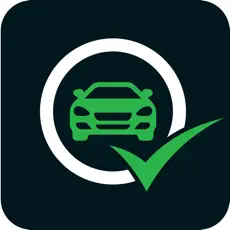Navigating Emissions Testing: What You Need to Know
Getting through a smog test can feel like a balancing act — one slip-up and your car could fail, sending you on a mission for repairs. But passing an emissions test isn’t about luck or a quick fix. It comes down to understanding how your vehicle’s exhaust system operates and what common issues can trigger a failure. From invisible hydrocarbon leaks to overlooked maintenance, the smallest details can make a big difference. Whether your car is freshly smogged or you’re gearing up for a retest, knowing how smog checks work can save you money — and help the environment.
What Is a Smog Test?
A smog test is an inspection designed to measure a car’s pollution output. It checks for harmful emissions like carbon monoxide, nitrogen oxides, and unburned fuel. These tests are especially important for older cars, which often struggle to meet modern emissions standards.
Smog testing is a required step for vehicle registration and sale in many states — especially for used or pre-owned cars. The process involves analyzing exhaust gases under controlled conditions. If pollutant levels are too high, the vehicle fails and may need repairs or adjustments before it can be retested. Even certified pre-owned vehicles undergo this process to ensure their emissions systems are functioning properly.
OBD-II vs. Tailpipe Emissions Testing
The type of emissions test your vehicle undergoes depends on its age and location. There are two main types:
| Test Type | What It Measures | When It’s Used | Key Points | Commonly Used In |
|---|---|---|---|---|
| OBD-II Test | Data from onboard sensors | Vehicles from 1996 and newer | Checks emissions system efficiency and readiness | Most states |
| Tailpipe Test | Gases from the exhaust | Older or modified vehicles | Measures pollutants directly under load | Certain counties in CA & other areas with legacy fleets |
Pre-Test Steps Most People Overlook
A lot of failed smog checks are caused by missed basics. Preparing properly can save you time and cash:
- Make sure the check engine light is off.
- Pay attention to any dashboard warnings.
- Use a VIN decoder like vinautochecker to confirm your car’s emissions classification (especially if it’s from out-of-state).
- After recent repairs, drive the car for a few days to allow the system to reset and recheck itself.
Essential Mechanical Checks Before Testing
Trying to cheat a smog test without addressing core issues can backfire — literally. Smog inspections include both emissions testing and a visual inspection, so nothing is overlooked.
Make sure to inspect:
- The Exhaust Gas Recirculation (EGR) system for blockages or damage.
- Check engine light status and diagnostic codes.
- The gas cap for a tight seal.
- Vacuum lines and hoses for cracks or leaks.
- The catalytic converter for wear, damage, or improper mounting.
What Technicians Don’t Tell You — But You Should Know
Smog techs follow strict protocols, but they won’t always explain what’s going on under the hood. For example, a clean vehicle history doesn’t guarantee a pass — sitting idle too long or missing routine maintenance can still lead to a failed test. Many smog stations don’t do repairs, meaning you’ll need to find a mechanic if something goes wrong.
Here’s a tip: you can do a basic check at home. An OBD-II scanner can reveal pending trouble codes and help confirm whether your vehicle is ready for testing. It’s not a replacement for the official inspection, but it can prevent unnecessary trips.
Bottom line — prepping your car is your responsibility. Catching issues early can save you both time and money.
